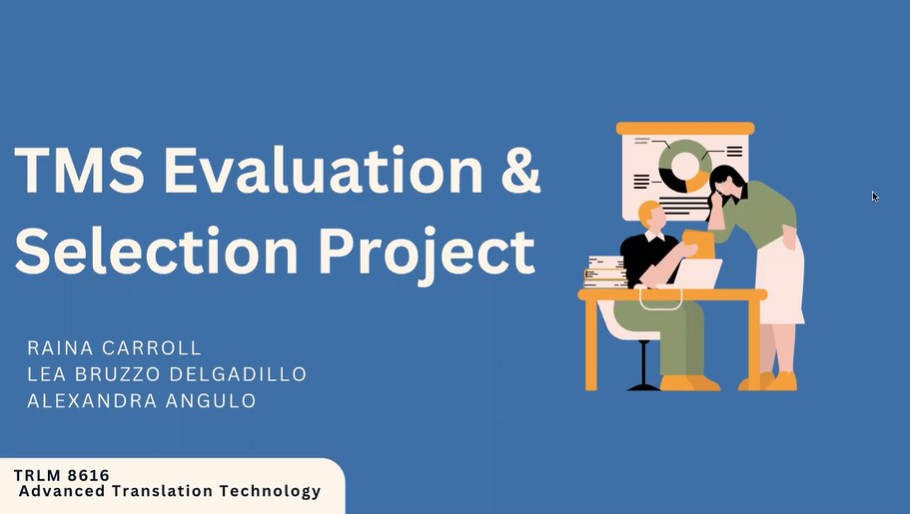In this pilot project, I worked with my colleagues Raina Carroll and Lea Bruzzo Delgadillo, to find a solution for our (fictitious) client, a well-known Language Service Provider (LSP) in the localization industry, who was looking to purchase a Translation Management Systems (TMS).
Client Needs & Requirements
Our client provided services in over 30 languages and its primary market was game localization. Another important fact that we kept in mind was that they had outgrown their current systems and were searching for a platform that better served the needs of its clients while also allowing them to maintain its high-quality standards.
Here are some of the most relevant key features that we compiled after meeting with our meeting:
- A TMS that met the client’s budget and provided future cost savings
- A TMS that was Cloud-based
- A System configuration and performance that was easy to use, intelligent, and reliable.
- API and integrations, including machine translation connectors, and integrations with other Content management Systems and terminology management systems.
- Security features that met industry standards
- A TMS with comprehensive Tech Support
TMS Evaluation
Once we gathered and clearly defined the needs of the company, budget and key business requirements (which we explain in detail in the video below), we researched different TMS solutions and chose to evaluate Transifex and Wordbee.


Scorecard
We then created a scorecard and a weighted scoring system to evaluate each TMS using the client’s key business requirements as seen in the image below:

As the scorecard above shows, we evaluated each TMS on the following 5 main components: integration, configuration, tools, implementation, and security. Each of these components was given a percentage based on our client’s main requirements and priorities.
Each component was broken down into subcomponents which we then used to evaluate the translation management systems in more detail. Each subcomponent was scored on a scale of 1 to 5, as outlined above. Final scores were calculated by weighing the scores of each subcomponent in order to get a combined score. These scores were then weighted according to the percentage weight that was assigned to each main component.
Although the scores we obtained were only 0.2 points apart in favor of Wordbee, Wordbee ultimately scored higher in 4 of the 5 components and had a higher overall score. We also noted, during the evaluation process, that it provides a better user experience and has a modern feel with streamlined processes that featured elements conducive to our client’s software localization needs.
Project Video Presentation
In the following video we describe in more detail our experience with each TMS, the features that we liked the most, and why we ultimately chose Wordbee for our client.
Conclusion
When choosing a TMS consider all the needs of the stakeholders who will be affected in the selection process. Not only those responsible for the finances but also the stakeholders that will be using the system as part of their daily functions. If for some reason the platform is not available or there is a security breach, or you do not have 24/7 tech support your company could face serious production and financial losses. Essential components such as the aforementioned should be looked at in detail and valued carefully against the needs of your organization.
In the long-term, having features such as a cloud-based system, with the necessary API integrations, adequate security standards, with a platform for project and vendor management, allows for translation memory and terminology management, and Machine Translation integrations, etc. can bring a lot of cost saving to your organization.
Overall, once you clearly understand all the needs, requirements and goals of your organization, sorting and evaluating the many different solutions available in the market should be the easy part.
Want to learn more? Check Nimdzi’s site which has a comparison tool and information on a long list of TMSs.

